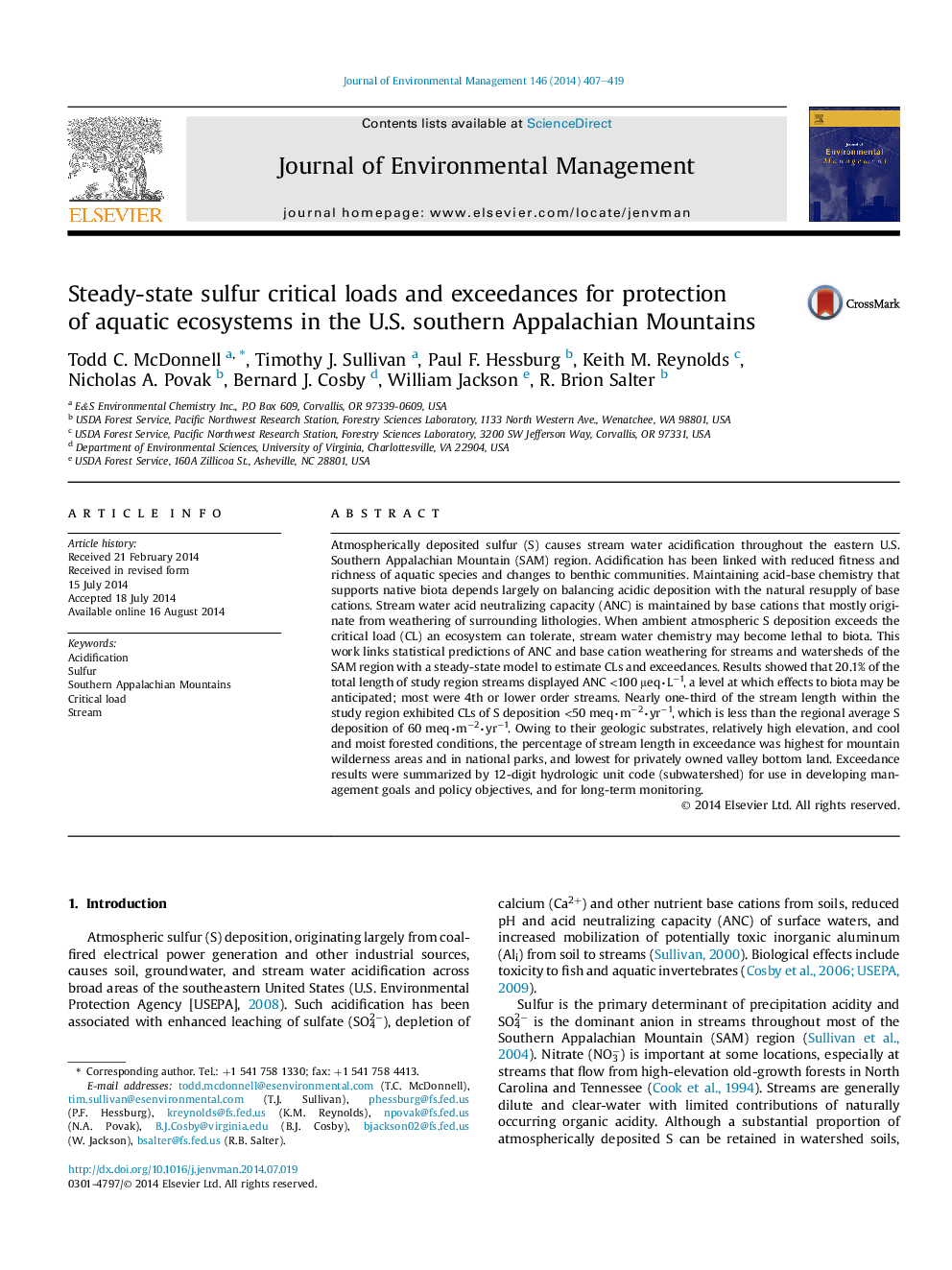| کد مقاله | کد نشریه | سال انتشار | مقاله انگلیسی | نسخه تمام متن |
|---|---|---|---|---|
| 7483657 | 1485266 | 2014 | 13 صفحه PDF | دانلود رایگان |
عنوان انگلیسی مقاله ISI
Steady-state sulfur critical loads and exceedances for protection of aquatic ecosystems in the U.S. southern Appalachian Mountains
ترجمه فارسی عنوان
بارها و بارهای بحرانی سولفور در حالت ایستا برای حفاظت از اکوسیستم های آبی ساحلی در کوه های آپالاچی جنوبی ایالات متحده
دانلود مقاله + سفارش ترجمه
دانلود مقاله ISI انگلیسی
رایگان برای ایرانیان
کلمات کلیدی
اسیدی شدن، گوگرد، کوههای آپالاچی جنوبی، بار بحرانی، جریان،
موضوعات مرتبط
مهندسی و علوم پایه
مهندسی انرژی
انرژی های تجدید پذیر، توسعه پایدار و محیط زیست
چکیده انگلیسی
Atmospherically deposited sulfur (S) causes stream water acidification throughout the eastern U.S. Southern Appalachian Mountain (SAM) region. Acidification has been linked with reduced fitness and richness of aquatic species and changes to benthic communities. Maintaining acid-base chemistry that supports native biota depends largely on balancing acidic deposition with the natural resupply of base cations. Stream water acid neutralizing capacity (ANC) is maintained by base cations that mostly originate from weathering of surrounding lithologies. When ambient atmospheric S deposition exceeds the critical load (CL) an ecosystem can tolerate, stream water chemistry may become lethal to biota. This work links statistical predictions of ANC and base cation weathering for streams and watersheds of the SAM region with a steady-state model to estimate CLs and exceedances. Results showed that 20.1% of the total length of study region streams displayed ANC <100 μeqâLâ1, a level at which effects to biota may be anticipated; most were 4th or lower order streams. Nearly one-third of the stream length within the study region exhibited CLs of S deposition <50 meqâmâ2âyrâ1, which is less than the regional average S deposition of 60 meqâmâ2âyrâ1. Owing to their geologic substrates, relatively high elevation, and cool and moist forested conditions, the percentage of stream length in exceedance was highest for mountain wilderness areas and in national parks, and lowest for privately owned valley bottom land. Exceedance results were summarized by 12-digit hydrologic unit code (subwatershed) for use in developing management goals and policy objectives, and for long-term monitoring.
ناشر
Database: Elsevier - ScienceDirect (ساینس دایرکت)
Journal: Journal of Environmental Management - Volume 146, 15 December 2014, Pages 407-419
Journal: Journal of Environmental Management - Volume 146, 15 December 2014, Pages 407-419
نویسندگان
Todd C. McDonnell, Timothy J. Sullivan, Paul F. Hessburg, Keith M. Reynolds, Nicholas A. Povak, Bernard J. Cosby, William Jackson, R. Brion Salter,
